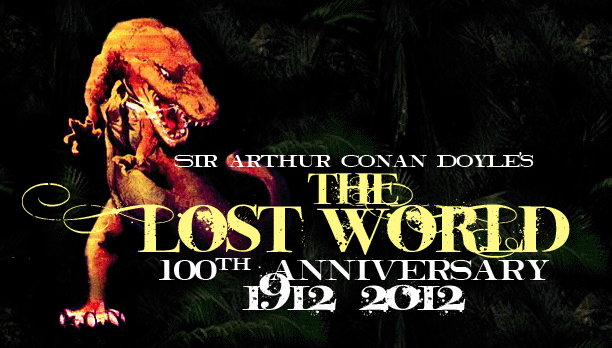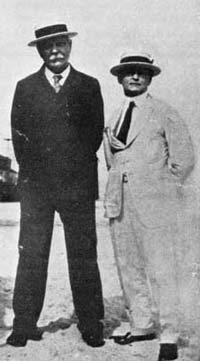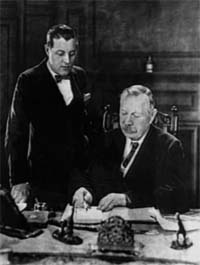

|

Not even a day had passed after that famous Society of American Magicians meeting before both Conan Doyle and Watterson Rothacker found themselves threated with lawsuits. Herbert Dawley, who had already tried to assume all the credit for Willis O'Brien's work in Ghost of Slumber Mountain, claimed that the patent for stop-motion model making – including the metal skeletons, “artificial sinews” and a “firm elastic substance of his invention which composes the muscles” of the models – belonged to him. To the New York Times of June 4, 1922, he repeated his frequent libel against O'Bie: “An employee of mine who learned the process by working in my office has been claiming, as employes [sic] sometimes do, that he did all the work and that the idea belongs to him and that sort of thing.” Conan Doyle immediately distanced himself from Dawley's suit, letting his secretary point out the obvious: “If it is true that any one claims that his patents have been infringed in this picture, that is a matter with which Sir Arthur has nothing to do. The actual work of producing the films is in the hands of Mr. Rothacker…” (NY Timess, Jun. 4, 1922). But seeking easy money and noteriety, Dawley intented to file a $10,000 claim for damages against the author. Dawley's lawyer suggested that this was “only a step” towards the eventual legal action to be brought against Rothacker, in which the filmmaker would be milked for $100,000 and an injunction brought against the production and dispossession of The Lost World. Days later, word of any suit had yet to reach the desk of Conan Doyle. As if that weren't enough, Hollywood’s only female producer, Catherine Curtis, wanted her share. Curtis came forward claiming that Rothacker sold her the rights to The Lost World for $35,000 in July 1920. Noting that she was prepared to invest another $100,000, she said that she had no idea there was a dispute over the rights until she read about Dawley's suit. Unlike Dawley, Curtis was originally content to negotiate a settlement out of court. However, by 1924 both cases had faded into distant memory. When cameras rolled on principle filming, no reporters had bothered to check up on the results.

|
In 1922, Sir Arthur Conan Doyle was on a lecture series in America, trumpeting the cause of Spiritualism that he picked up in the years following WWI and the death of his son, Kingsley. During the course of this tour, Conan Doyle's good friend Harry Houdini invited him to the annual meeting of the Society of American Magicians. But despite being close, their friendship was frequently tested by Houndini's deep-seated skepticism of Spiritualist claims. He and his fellow magicians spoke out a great deal against "psychic" frauds by replicating their phenomenon by stage conjuring.
Anticipating more of the same at the Society’s meeting, Conan Doyle prepared a little trick of his own. Bringing in a movie projector, he offered no explanation of what the magicians were about to see except the following: These pictures are not occult… this is psychic because everything that emanates from the human spirit or human brain is psychic. It is not supernatural. Nothing is. It is preternatural in the sense that it isn’t known to our ordinary senses. It is the effect of the joining on the one hand of imagination, and on the other hand of some power of materialization. The imagination, I may say, comes to me. The materializing power comes from elsewhere.The “materializing power” came from the hand of Willis O’Brien. The following day (June 3, 1922), the New York Times ran the following headline: Following this front page uproar, the next day's New York Times reported a letter sent by Conan Doyle to Houdini, explaining the trick: My Dear Houdini:Overnight, Conan Doyle made the film adaptation of his novel the most anticipated movie in America!
|